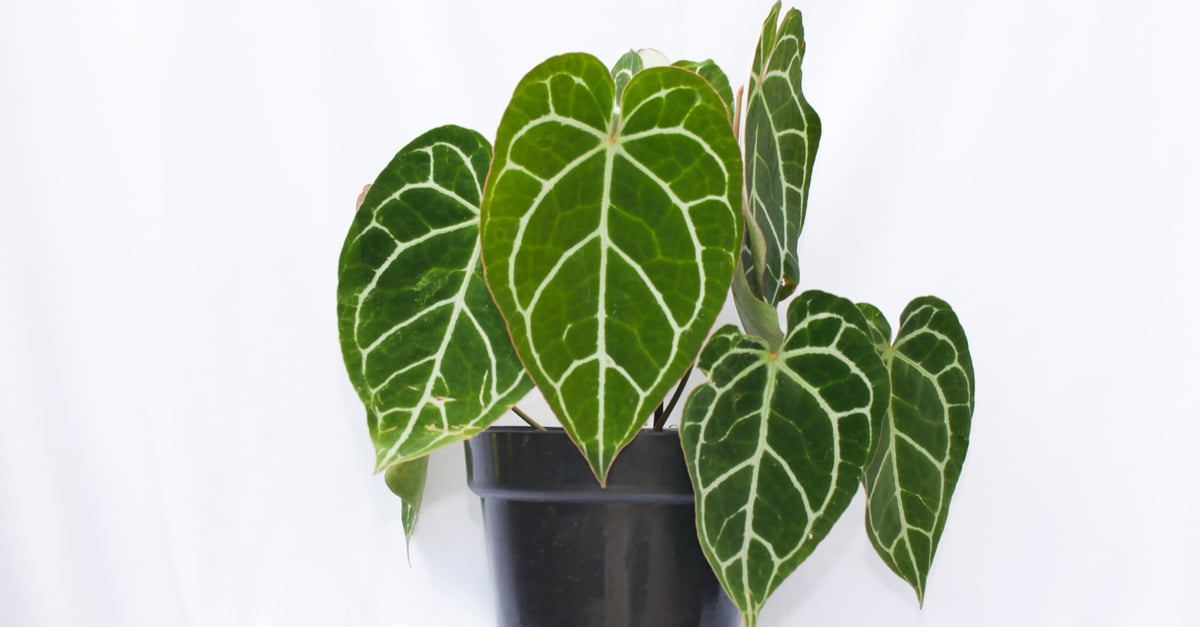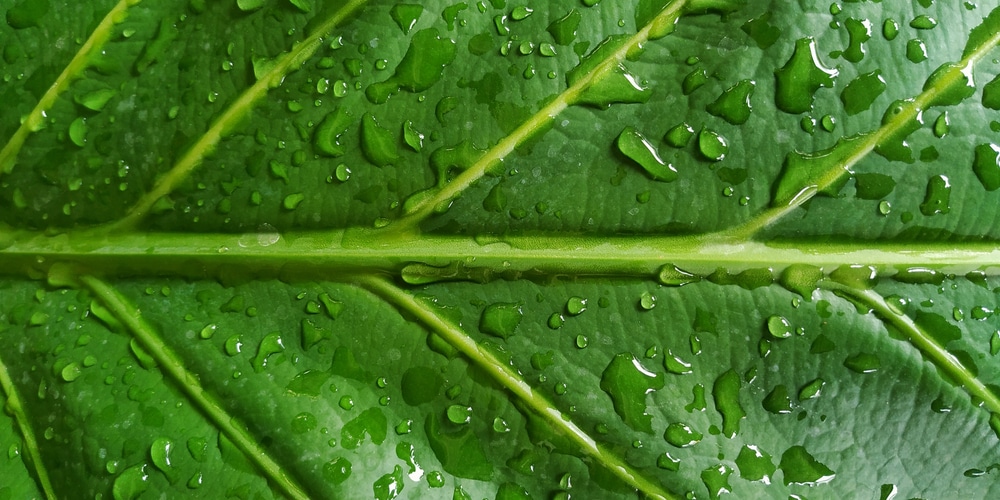If you’re looking for an interesting and exotic houseplant to add to your collection, Anthurium crystallinum is an excellent option. This beautiful plant is easy to care for, and its unique leaves make it a conversation starter.
Anthurium crystallinum is a beautiful and unique plant highly prized for its large, shiny leaves. Let’s look at how to grow and care for Anthurium crystallinum. We’ll cover everything from planting to fertilizing to pests and diseases so that you can have a healthy and thriving anthurium plant of your own!
What is an Anthurium Crystallinum?
Anthurium crystallinum is an exotic, tropical plant with heart-shaped leaves. It belongs to the family Araceae and the genus Anthurium. This genus of plants has over 200 species that are native to Central America, South America, and the Caribbean Islands. It can grow as a terrestrial plant or can climb a tree and become an air plant.
This plant has unique foliage. The leaves are dark green and glossy with lighter colored veins that are cream or light green colored. The Anthurium crystallinum will flower once a year with a thin spathe that’s a dull brown to purple color. The flowers have a lovely fragrance.
How to Care for an Anthurium Crystallinum?
Anthurium crystallinum is a tropical plant that cannot tolerate frost or freezing temperatures. You can grow it outdoors in USDA zones 10 to 12, but it also does just fine as a houseplant in colder areas. Here are some tips to help you grow and care for a thriving Anthurium crystallinum plant:
Sunlight requirements
Anthurium crystallinum plants should be placed in bright or filtered light and prefer temperatures above 60 degrees Fahrenheit. Be careful not to leave your plant in the full sun, or its leaves may get sunburnt, even through the glass of a window.
Watering needs
This low-maintenance plant can survive with infrequent watering, but it will do its best when watered regularly. These plants need about 1 to 2 inches of water per week to stay healthy. You can check the moisture level in the potting media by sticking your finger down into the soil until you feel the potting media feels dry. It’s time to water your plant when the top 2 inches of soil feel dry.
Temperature
Anthurium crystallinum plants do well in temperatures that are between 65 to 75°F. They can cope with slightly lower nighttime temperatures and can be grown outdoors if you live in USDA zones 10 and 11.
Pests and diseases
Anthurium crystallinum plants are pretty resilient, but there are a few pests and diseases that you might come across. Anthurium plants are susceptible to mealybugs, scales, whitefly, and aphids. These insects can be controlled using insecticidal soap, neem oil, or pesticide spray.
While Anthurium plants are generally resistant to disease and rot, they may be affected by fungal infections if kept too moist or in poorly-drained soil. You can treat your plant with a copper fungicide. You can also prevent problems by keeping your plant clean, using only potting soil that is well-drained, avoiding overwatering the plant, and not misting the leaves.
Soil and repotting
Anthurium crystallinum plants should be re-potted every spring so that they have enough room to grow. When transplanting your anthuriums, choose a potting media with good drainage as well as organic matter such as peat or perlite. Alternatively, use a pre-mixed potting compost that’s been designed for orchids.
Humidity
Anthurium crystallinum likes to grow in areas with high humidity of around 70 to 80% as they are tropical plants. You can increase the humidity surrounding your plant by using a pebble and water tray, grouping tropical plants, or using a humidifier. If you decide to mist your plant, be careful not to soak the leaves as this could cause them to rot and will increase the chance of fungal infections.
Fertilization
A well-balanced fertilizer once monthly during the growing season will benefit your Anthurium crystallinum plant. Alternatively, use a slow-release fertilizer in the early spring.
Conclusion
Anthurium crystallinum is a beautiful houseplant that will do just fine with infrequent watering. With lots of bright light and proper care, your plant will last for years to come and will also flower regularly.
When buying an Anthurium crystallinum, people often take a look at the Anthurium clanervium, which is why we created this Anthurium crystallinum vs clarinervium guide.
Related Anthurium:
- Anthurium Superbum– The Anthurium Superbum has long, elliptical leaves that give off a pre-historic jungle vibe.


